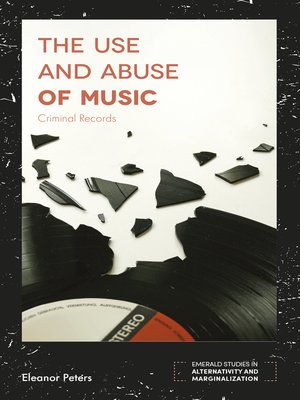The Use and Abuse of Music
ebook ∣ Criminal Records · Emerald Studies in Alternativity and Marginalization
By Eleanor Peters

Sign up to save your library
With an OverDrive account, you can save your favorite libraries for at-a-glance information about availability. Find out more about OverDrive accounts.
Find this title in Libby, the library reading app by OverDrive.



Search for a digital library with this title
Title found at these libraries:
| Library Name | Distance |
|---|---|
| Loading... |
Music may not be an obvious area for a criminologist's attention, but there are many areas appropriate for analysis in the relationship between sound, music, rights and harm. The Use and Abuse of Music: Criminal Records explores how music is utilised to include, exclude, dominate and silence.
Analysing the connection between music and crime from an expressly critical criminological perspective, the book is divided into three main parts. Firstly, focusing on the concept of 'harmful' or deviant music, genres such as UK drill music and heavy metal are examined to highlight the connections between certain genres and criminalisation. Moving away from specifics of genre, the second section considers the use of music in war and conflict. Finally, the book reflects on the censorship and silencing of subcultures and individuals through music, highlighting the inequalities surrounding who is permitted to make noise which is often exemplified by racist, sexist and prejudicial actions.
This illuminating exploration of the deviant and transgressive nature of music is ideal for researchers, scholars and students working within the fields of criminology, sociology and musicology.
Analysing the connection between music and crime from an expressly critical criminological perspective, the book is divided into three main parts. Firstly, focusing on the concept of 'harmful' or deviant music, genres such as UK drill music and heavy metal are examined to highlight the connections between certain genres and criminalisation. Moving away from specifics of genre, the second section considers the use of music in war and conflict. Finally, the book reflects on the censorship and silencing of subcultures and individuals through music, highlighting the inequalities surrounding who is permitted to make noise which is often exemplified by racist, sexist and prejudicial actions.
This illuminating exploration of the deviant and transgressive nature of music is ideal for researchers, scholars and students working within the fields of criminology, sociology and musicology.







